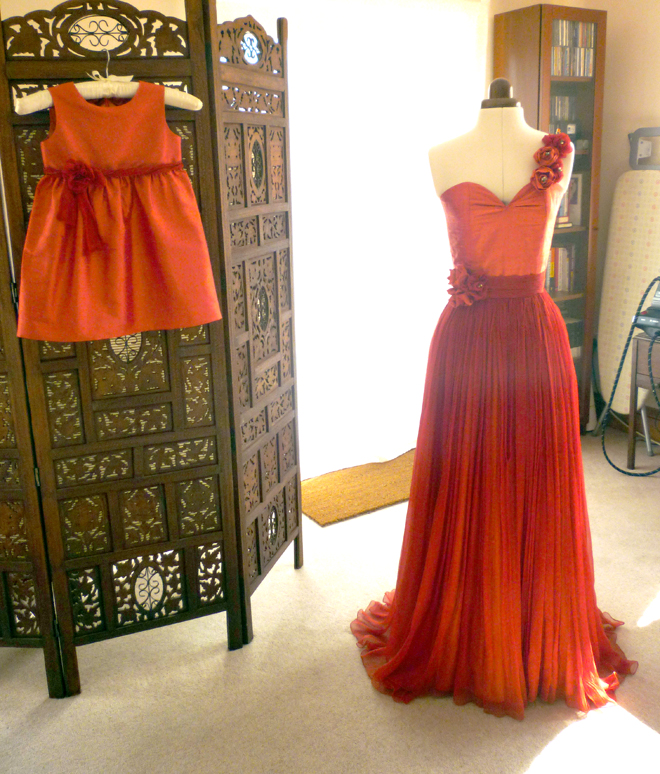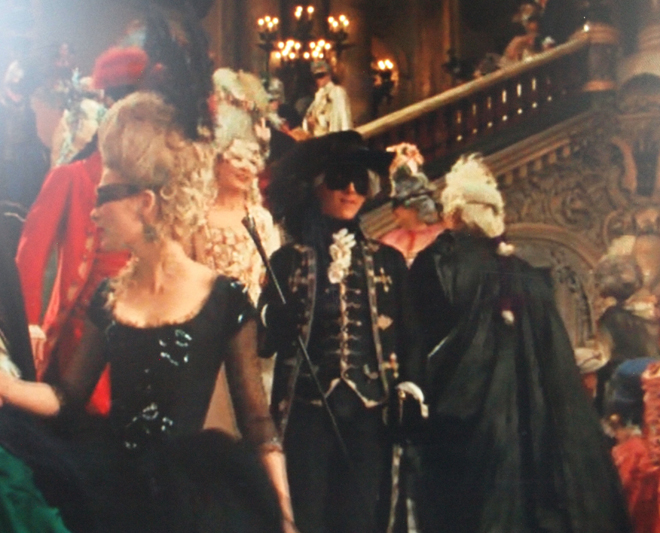Film and Costume - Marie Antoinette the influence on fashion
The influence of
Sofia Coppola's Marie Antoinette is now a fashion cliche in the realms of Audrey Hepburn and the famous French macaroon.
Manolo Blahnik designed the shoes and it's no surprise when things are this beautiful that the latest Dior campaign and countless fashion shoots have all been inspired
by this iconic cult movie.
This is all down to the incredible
Oscar winning designs of Milena
Canonero.
The overall look of the film is set in soft pastels, blues and silk tones (inspired by those Laduree
macaroons) evoking the great Cecil Beaton photograph of Charles James ball gowns.
The cinematography is
bright and light with fresh summer skies and gorgeous grainy dusk's giving that intimate youthful aire. There are many eye level shots immersing the audience as a character in the room with Marie-Antoinette. This is then contrasted with huge wide shots of
the steps at
Versailles for grand scale of the location.
The soundtrack takes genre out of it's stuffy period-drama box and markets as a teen movie whilst the rest of the audience is filled with a nostalgic haze for the beauty of youth that Coppola captures so well.
It's not
dramatic in the British period drama way leaving out the usual pout and
hyper ventilation in tight corsets. Instead she opts for a cool casual aire.
Coppola
positions Antoinette as a down to earth girl, like any of her age, who doesn't
really grow up in her candy box surroundings. The real Marie-Antoinette was a
teenager thrown into being the Dauphine of France at fifteen.
The sets are breathtaking, rooms to make
your heart pound with indulgence, the real vast gardens of Versailles, the
redecorated rooms at the Palace (which Coppola was given permission to use) filled with the specialist cake departments
works of art and detail galore. Trims are trimmed and trimmed again. Even inside the carriage
looks divine papered in blue silks and gold swirls.
Just what you'd expect
but in some way it all looks comfortable and real, not so staged.
This
is also the feeling you get with the costumes, it doesn't feel like the actors
have all dressed up, they wear their gowns and frock coats comfortably like modern clothing today. They are worn in such a relaxed manner.
Canonero said In The London Times Magazine: "We squeezed the essence of the
period, without reproducing it. Even if you think you know a lot about it," she
argues, "you always have to look for a new angle. I simplified the very heavy
look of the 18th century. I wanted it to be believable, but more
stylised."
The first outfit Antoinette is wearing is pale blue velvet, we
talked about the significance of pale blue earlier in the blog and the feminine romance
associated with this specific colour.
The dress in Austria is altogether
more modest, neat fitted jackets buttoned to the neck, fine ribbon hair bows, and
softer hair. On becoming French the costume becomes more flamboyant in couture a
low scooped neckline, an austere up-tight look with Tricorn hats and adornments all
over.
This constricted look continues at the palace, the wedding dress
with a bare neckline and very delicate jewels but powdered stiff hair giving an awkwardness at the occasion.
The 'ridiculous' morning dressing scene
demonstrates control by disallowing her to dress herself, something to
rebel against. I love all the frilled ladies in waiting surrounding the naked Antoinette and the soft simple smocks she wears to sleep in.
And then we have the famous couture shopping montage (yes
the best fashion montage around) picking silk fabrics, the confectious shoes, feathers
and ruffles. To
compare this scene with the makeover scene in Clueless wouldn't go amiss and such fun indulgence in the characters personal style.
Check out the blue converse high tops lying next to the little shoes in this scene, this shot sums up the whole tone of the film.
The black ball gown is the first outing of Antoinette's chosen more
confident defined style with the tulle eye mask (also used in the latest Dior
ad) is rock modern with a t shirt cut to the bodice and sheer panels
making her stand out against the colourful guests with 'a cool girl'
mystery.
The colours in the palace maintain a soft pastel tone for most
characters throughout the film with the occasional shot of colour for key roles
in a deeper yellow, royal blue or red. Comtesse Du Barry shows off her sexual
prowess in her rich reds, blues and purple silks against her cascading black
locks as the scarlet woman. Contrasted with the yet to be deflowered Antoinette
the costumes reveal the sexual undercurrent to the story.
And
then there is the style change after the long awaited consummation and a child is born. Suddenly
independence at Trianon with free fitting bohemian white dresses, soft voile's
and lawns, reminiscent of Poiret or back to Austen days and romantic country
cottage paintings. It makes me imagine the early days of Laura Ashley with all that Edwardian impressionist romance instilled in the designs.
On return to the palace the dress is austere again but
with style details like the red velvet belt on the pale blue dress signifying
the lustrous affair and longing love, many peoples favourite outfit of the film. There is a Japanese influence in kimonos,
dressing gowns and a maturing style and black worn for mourning, the children
softened with pale blue trims on black. The colours gradually then go to
black and white then white with a black ribbon. And then the last outfits in
smokey solemn blue fading to a dull denim grey.
Many people question this film, many say nothing happens and it is a quiet film but visually I don't think they could have done more to indulge the eyes. There are
approximately 65 costume changes for
Kirsten Dunst in this film. I lost count
but you can see them all and read about them here on
the costumers guide site.
Each and every one expresses a part of the story, an emotion or event and
this is just the main character. There are the supporting roles, the men, the
children, the sets and the sounds that all make this one of the most influential
films for fashion and style.
Marie Antoinette 2006,
Director: Sofia Coppola
Cinematographer: Lance Acord
Art Directors: Anne Seibel and Pierre Duboisberranger
Costume Design: Milena Canonero
Plus a huge list of very talented people in the hair, make-up, art and costume departments.
All photos are taken from the film and are not to be used commercially.






















































